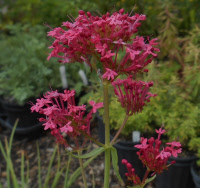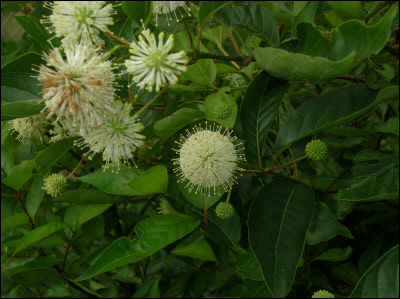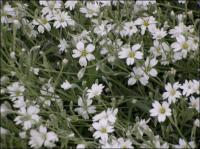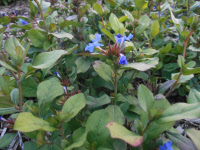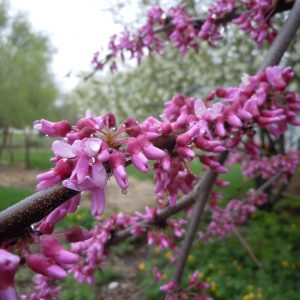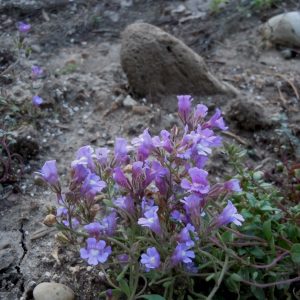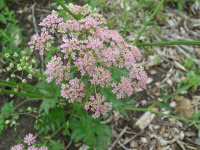Shop
Showing 169–176 of 788 results
-
Centaurium scilloides Carpet tulip, Perennial centaury Z 5-9
Sweetest plant ever - tiny pink tulip-like flowers in constant bloom mid-summer to frost, close at night and open in daytime
ARCHIVED
Note: This is a plant not currently for sale. This is an archive page preserved for informational use.
Sweetest plant ever – tiny pink tulip-like flowers in constant bloom mid-summer to frost, close at night and open in daytime
Size: 2” x 4”
Care: sun to part shade in moist to moist well-drained soil
Native: Atlantic Ocean coasts of Europe, AzoresNamed by Carl Linnaeas the Younger in the supplement to his father’s legendary book Species Plantarum, 1782
-
Centranthus ruber Jupiter’s beard, Red Valerian, Pretty Betsy Z 5-8
Clusters of crimson, star-shaped florets atop 2’ stems bloom their heads off ALL summer into fall.
Clusters of crimson, star-shaped florets atop 2’ stems bloom their heads off ALL summer into fall.
Size: 24-36”x 12”
Care: Sun in well-drained alkaline soil, drought tolerant
Native: Mediterranean
Wildlife Value: attracts butterflies, bees and hover flies.Centranthus is from the Greek meaning “spurred flower.” According to Culpepper, an English herbalist from the early 1600’s, this plant comforts the heart and stirs up lust. Parkinson, in 1629 describes it “of a fine red colour, very pleasant to behold.”
-
Cephalanthus occidentalis Button bush, Honey balls Z 4-10
Perfectly round, white flowers perfume the air in Aug. & Sept. Red leaf stems contrast with green foliage.
Perfectly round, white flowers perfume the air in Aug. & Sept. Red leaf stems contrast with green foliage. Ships only in spring
Size: 6' x 8'
Care: Full sun to part shade in wet to moist well-drained soil
Native: New Brunswick S. to Fla. W. to CA.
Wildlife Value: Important shrub to maintain water quality and for wildlife habitat. Its roots absorb nutrients in water and reduce erosion along water's edges. Flowers attract butterflies. Birds nest in branches.Many medicinal uses for several tribes – Chickasaw, Choctaw, Kiowa, Meskwaki and Seminole, believed to remedy sore eyes, toothaches, dysentery, hemorrhages, headaches, nausea, fevers, constipation, ailments in horses and “wolf ghost sickness.” Rand 1866: “Valuable for blooming at a season when the shrubbery is bare of flowers.” Offered for sale in Bartram Garden’s 1783 Broadside, America’s 1st plant catalog.
**LISTED AS OUT OF STOCK BECAUSE WE DO NOT SHIP THIS ITEM. IT IS AVAILABLE FOR PURCHASE AT OUR RETAIL LOCATION.
-
Cerastium biebersteinii Mouse ear Z 4-7
White felt-like foliage, white flowers in spring. “Ornamental foliage dwarf plant with beautiful silvery tinted foliage,” Bliss & Sons Catalog 1872.
White felt-like foliage, white flowers in spring. “Ornamental foliage dwarf plant with beautiful silvery tinted foliage,” Bliss & Sons Catalog 1872.
Size: 6" x spreading
Care: Sun in well-drained soil
Native: TauriaCerastium is from the Greek keras meaning “horn” because of the shape of the seed capsule. Used as a groundcover under tropical plants in Victorian gardens. In 1913 Sanders identified it as a “good edging or rockery plant.” Grown in American gardens since 1860’s.
-
Ceratostigma plumbaginoides Plumbago, Leadwort Z 5-9
Cobalt blue flower clusters with contrasting, showy red stems
ARCHIVED
Note: This is a plant not currently for sale. This is an archive page preserved for informational use.
Cobalt blue flower clusters with contrasting, showy red stems and calyces in late summer and fall. Foliage turns crimson in fall – excellent groundcover. One of the most award winning plants.
Size: 9-12” x 18”
Care: Sun to part shade in moist well-drained soil
Native: China
Awards: Five (5) of them! Georgia Gold Medal 2006, Elisabeth Carey Miller Botanical Garden Great Plant Picks, Missouri Botanical Garden Plant of Merit, Royal Horticultural Society Award of Garden Merit, Oklahoma ProvenPlumbago is Latin meaning “lead” derived from use of the plant to treat lead poisoning. First collected by Russian botanist Alexander von Bunge in 1830 in Mongolia, then introduced by Robert Fortune who found it growing in Shanghi in 1846. “Bear a profusion of brilliant cobalt blue flowers (when) the leaves take on a distinct reddish tinge.” H.H. Thomas 1915.
-
Cercis canadensis Red bud, Judas tree. Z 4-8
In spring when we need a Dionysian jolt from winter’s hibernation the Red bud’s flowers burst open. Shameless fuchsia buds appear along the tree’s stems, before the leaves unfurl. As spring turns to summer, glossy medium green hearts, the shape of each leaf, replace the buds. Vase shaped, fast growing and blooming as a young tree.
OUT OF STOCK
In spring when we need a Dionysian jolt from winter’s hibernation shameless fuchsia buds appear along the tree’s stems, then Red bud’s flowers burst open before the glossy leaves unfurl.
Size: 20-30’ tall and 25-35’ wide
Care: sun to part shade and moist well drained soil.
Native: between NY northwest to Wisconsin, Florida and southwest to New Mexico. Oklahoma adopted it as its state tree.
Wildlife Value: Spring Azure, Henry’s Elfin & Great Purple Hairstreak butterflies drink flowers’ nectar. Immune to the toxin Juglone from Walnut trees.1st described by French explorer and botanist Joseph Pitton Tournefort in 1700 in Institutiones rei herbariae and he named it Siliquastrum canadense. The tree went through six different names until 1737 when Linnaeus renamed it Cercis canadensis. Collected by Colonial nurseryman John Bartram. (1699-1776) George Washington planted this at Mount Vernon. Cherokee and Delaware steeped Red bud roots and bark in water for cures of fever, stuffiness, whooping cough and vomiting. Cherokee children ate the flowers. French Canadians added them to salads.
-
Chaenorhinum glareosum Dwarf snapdragon Z 5-9
Rare plant. Spires of tiny purple to blue trumpets with yellow throats spring, summer & fall. Love this itsy plant.
Rare plant. Spires of tiny purple to blue trumpets with yellow throats spring, summer & fall. Love this itsy plant.
Size: 4” x 9-12” semi-trailing cushion
Care: sun to part-shade in well-drained soil
Native: Spain
Wildlife Value: Attracts bees, butterflies and birds.1st described in 1838. Chaenorhinum means “honey lotus” in Greek.
-
Chaerophyllum hirsutum ‘Roseum’ Hairy chervil Z 5-7
Airy rose-pink umbels like a short, pink Queen Anne’s lace, blooming in spring to early summer, compliment the fern-like apple-scented fragrant foliage.
ARCHIVED
Note: This is a plant not currently for sale. This is an archive page preserved for informational use.
Airy rose-pink umbels like a short, pink Queen Anne’s lace, blooming in spring to early summer, compliment the fern-like apple-scented fragrant foliage.
Size: 24” x 12”
Care: sun to part shade in moist well-drained soil, cut back to refresh foliage and rebloom.
Native: Spain to Greece
Awards: Elisabeth Carey Miller Botanical Garden Great Plant PickNamed from Greek chairo meaning “to please” & phyllon meaning “leaf,” so named “because the leaves, steeped in wine, and drank, will exhilarate and chear (sic.) melancholy persons… (it) grows naturally on the Alps, and the Helvetian mountains. …the stalk (is) terminated by large umbels of flowers, in which some plants are red and in others white…. These plants are preferred in botanic gardens for variety …” Gardeners’ Dictionary, 1768. 1st Described by Swiss botanist Gaspard Bauhin in 1600’s.


